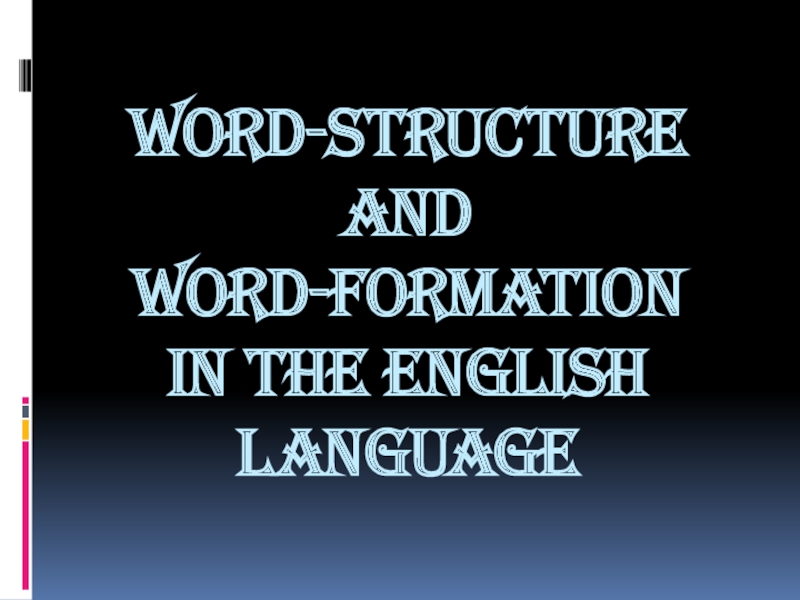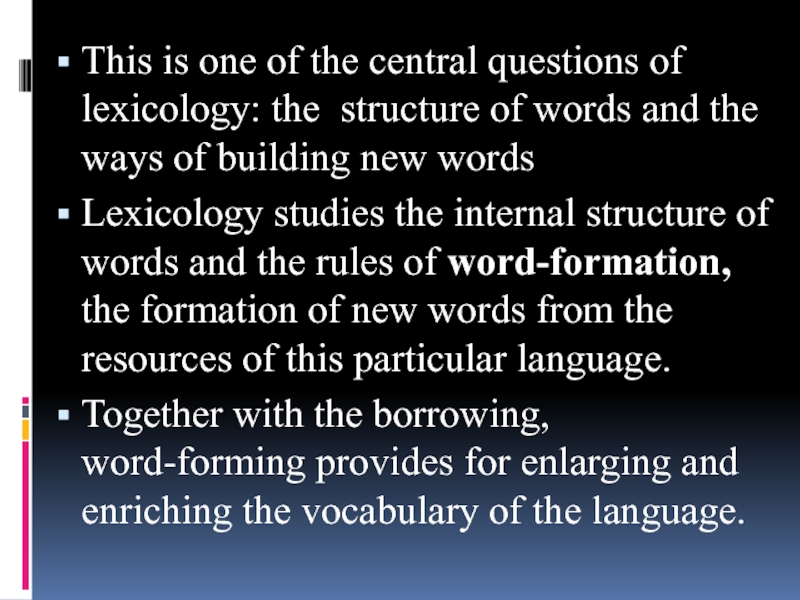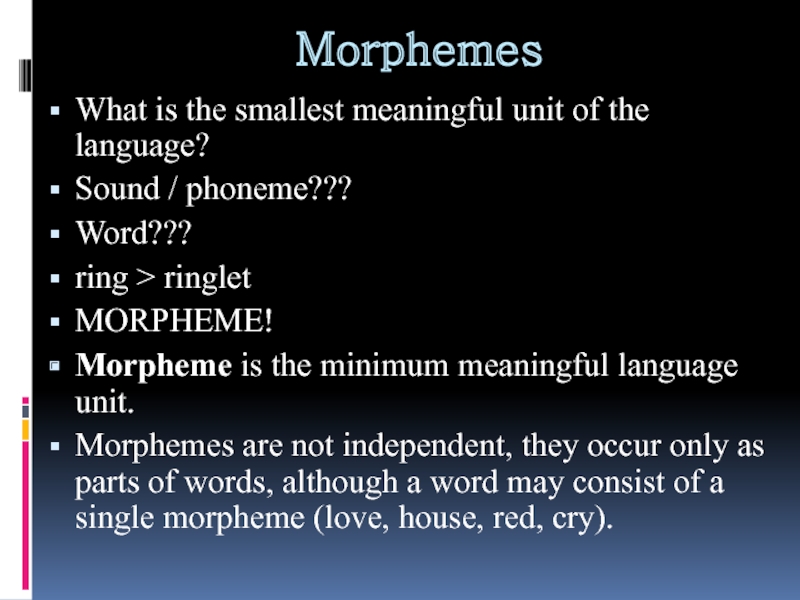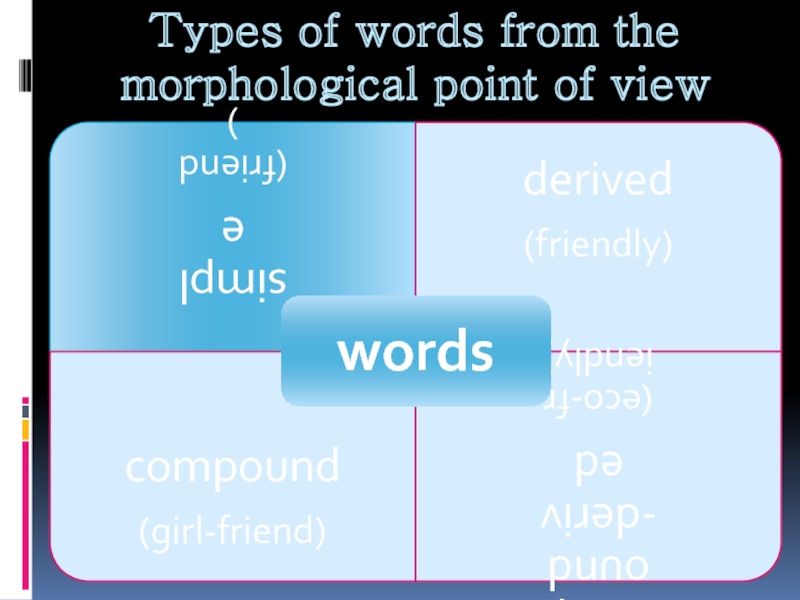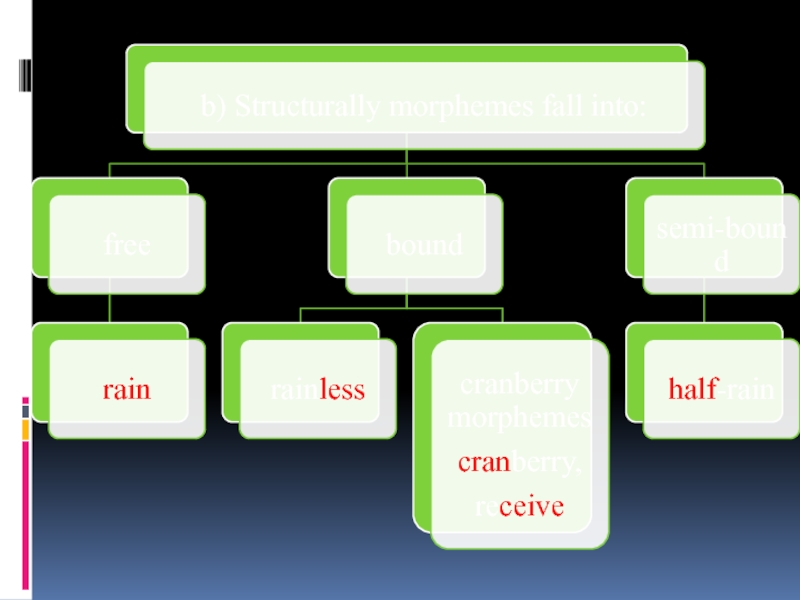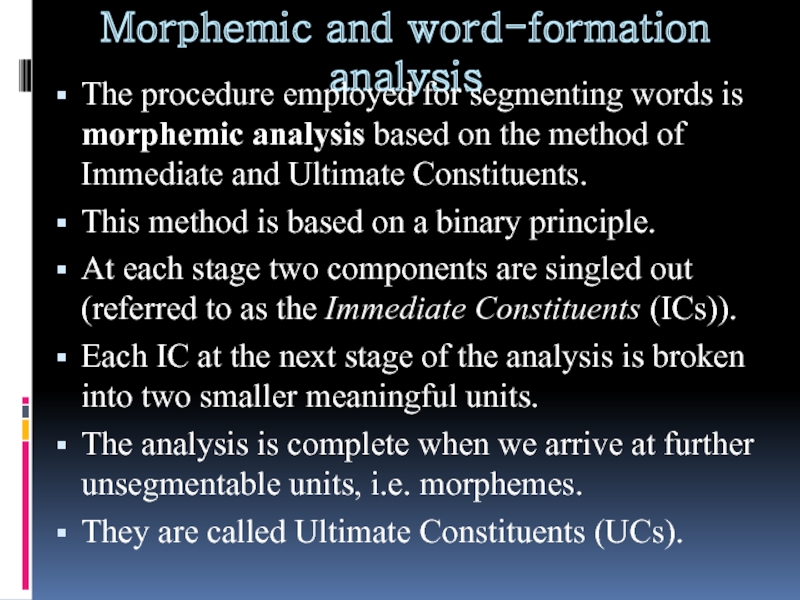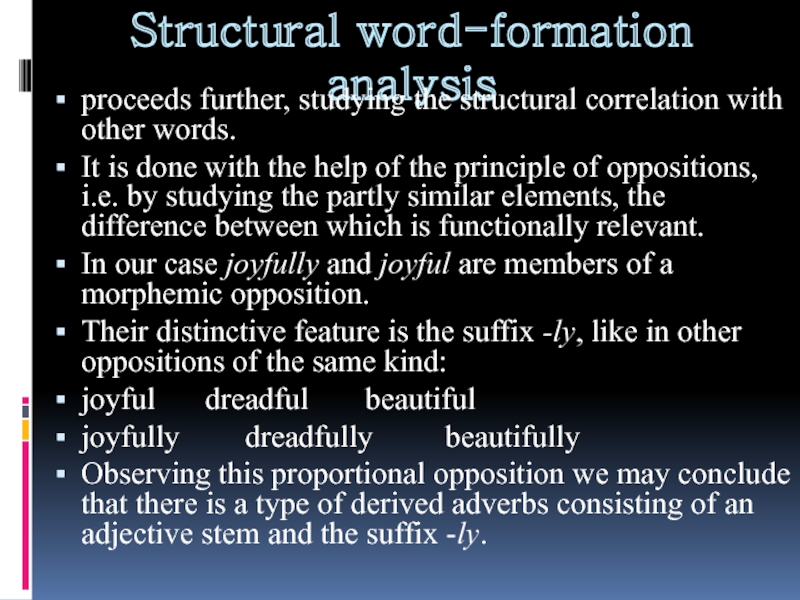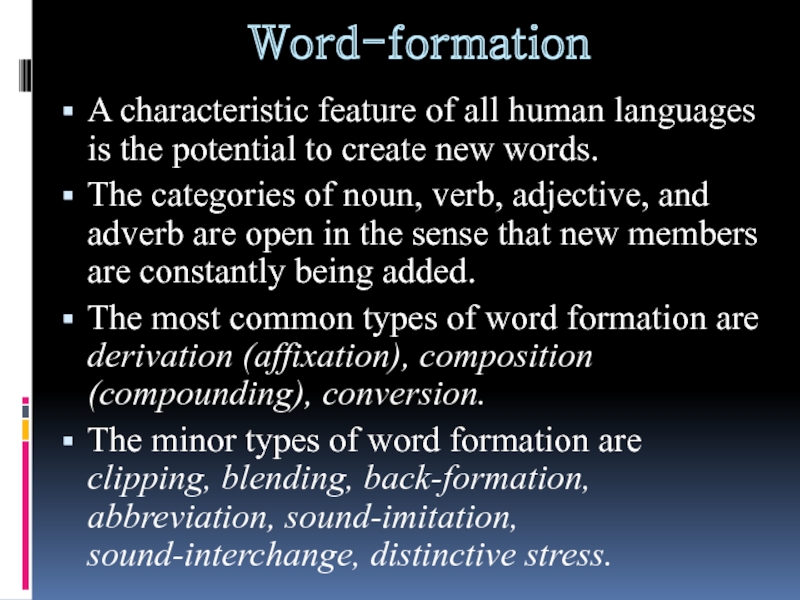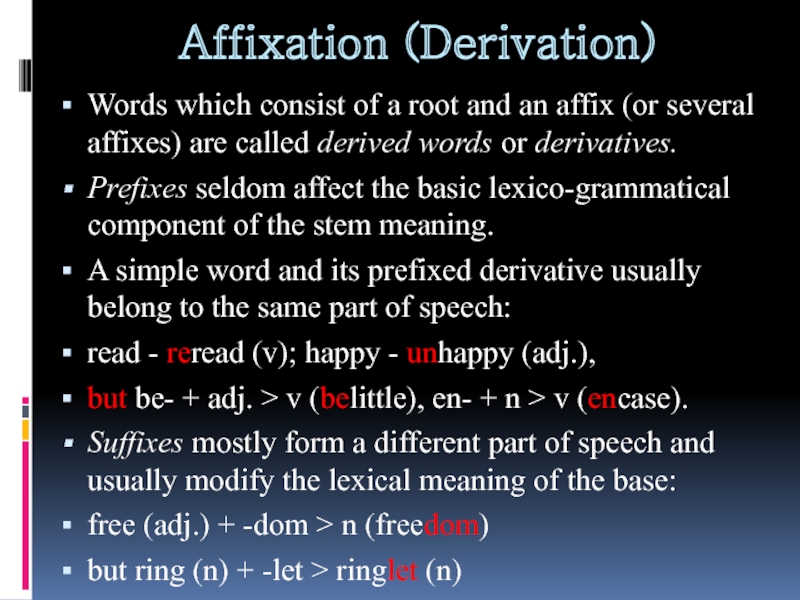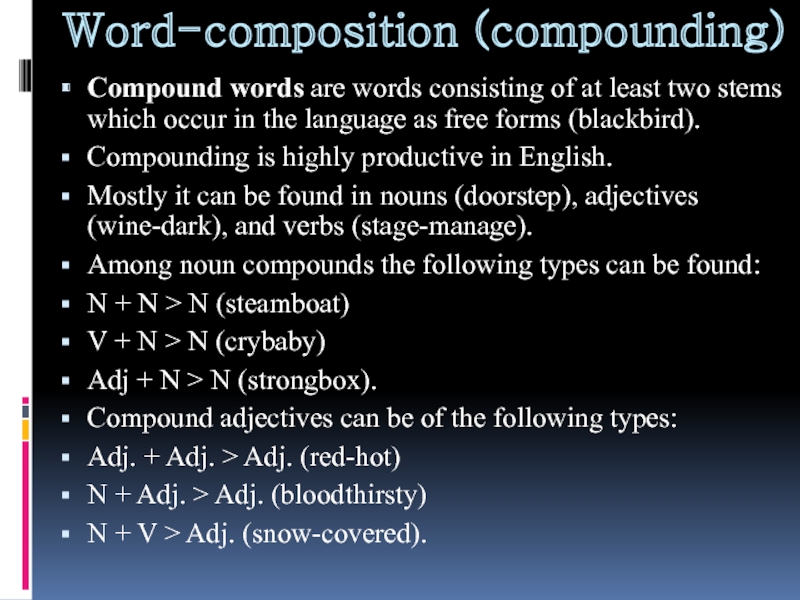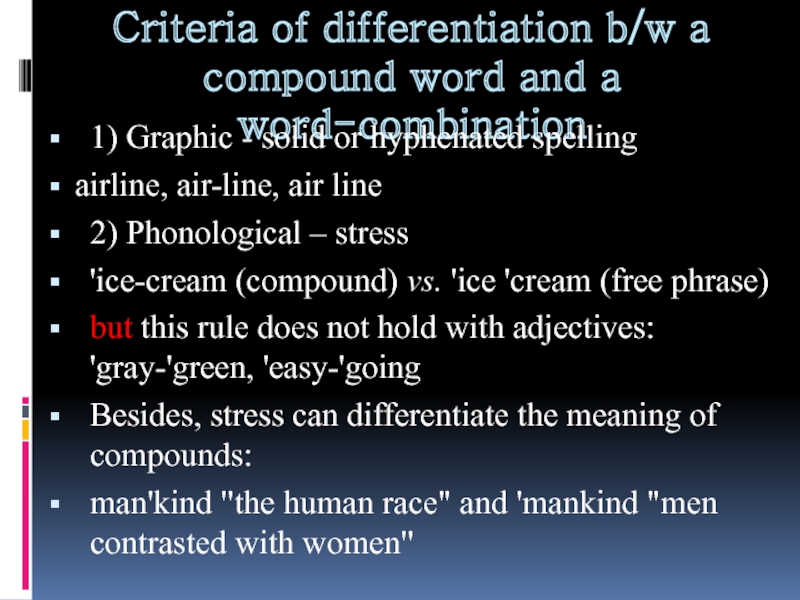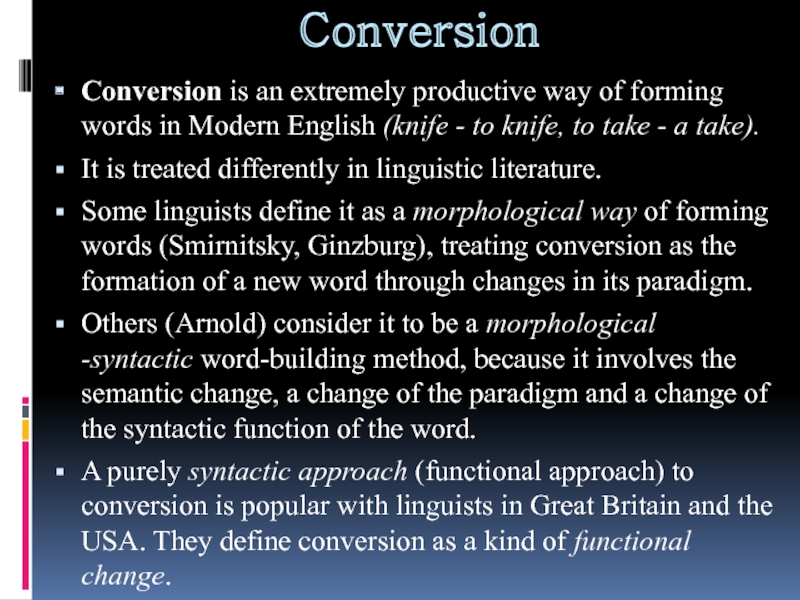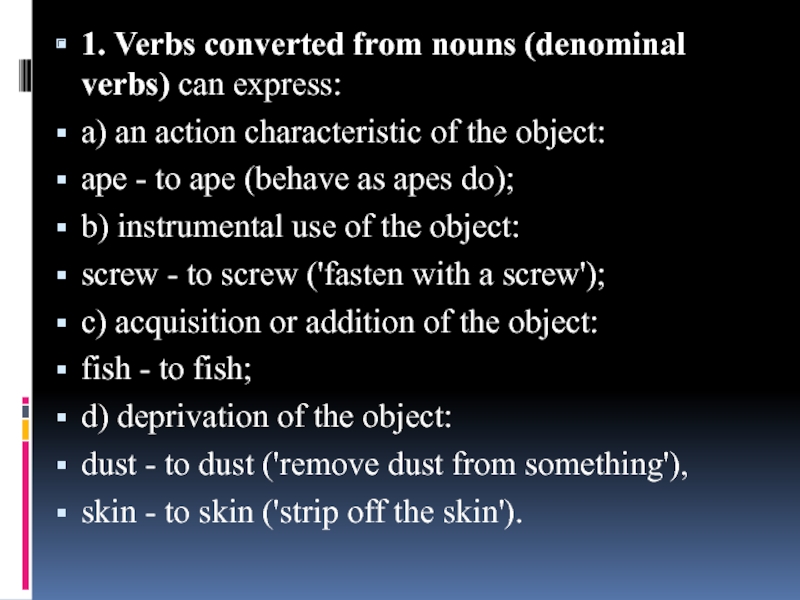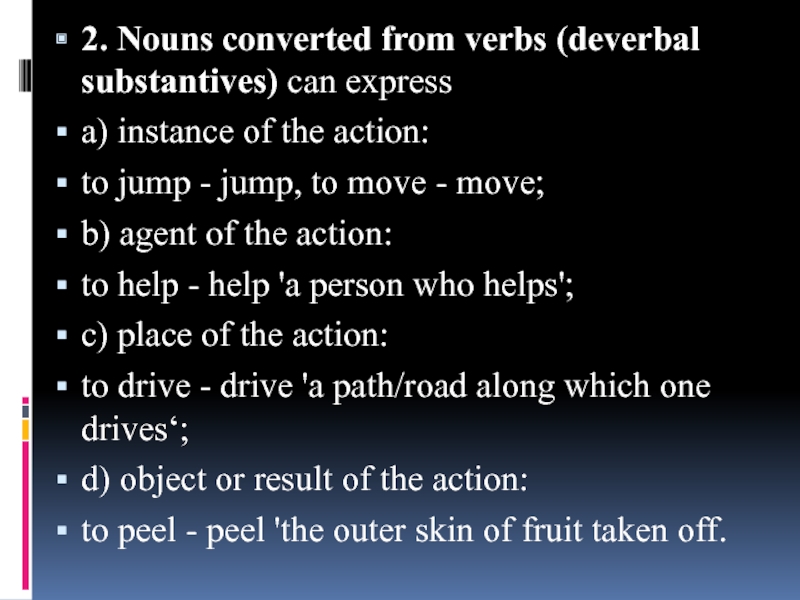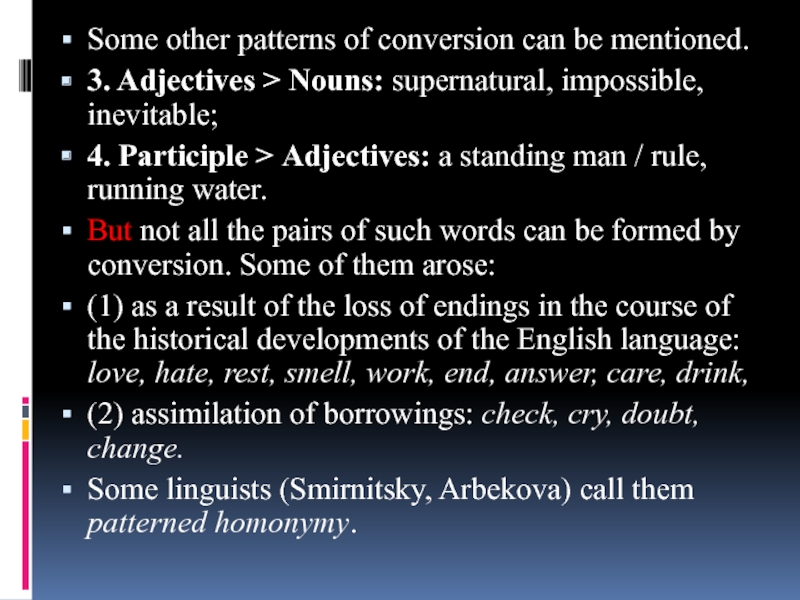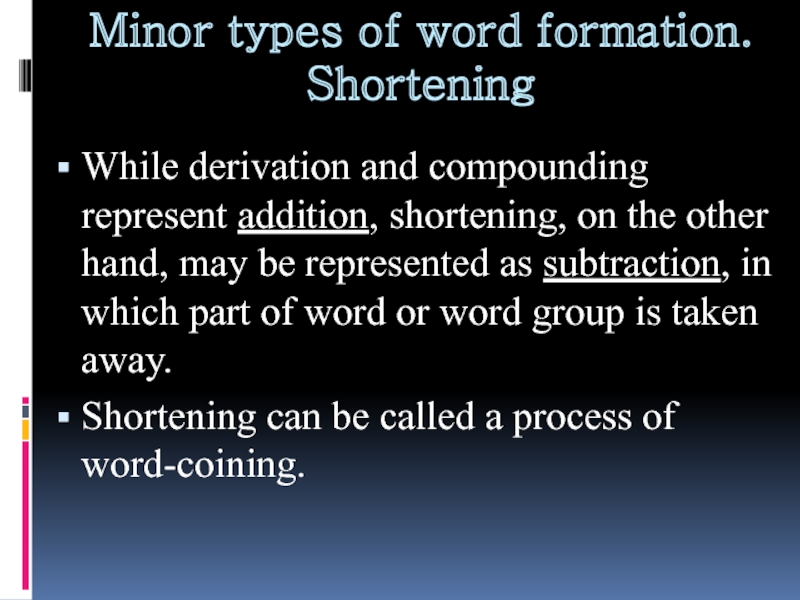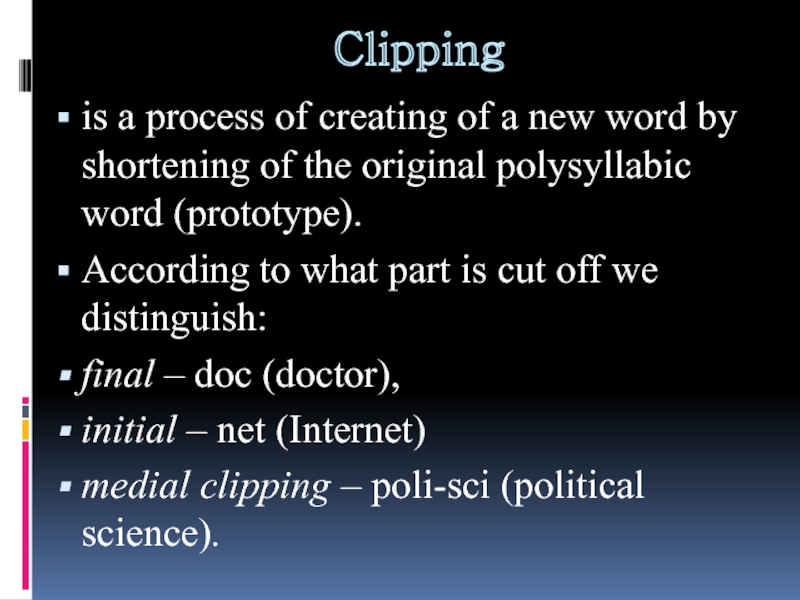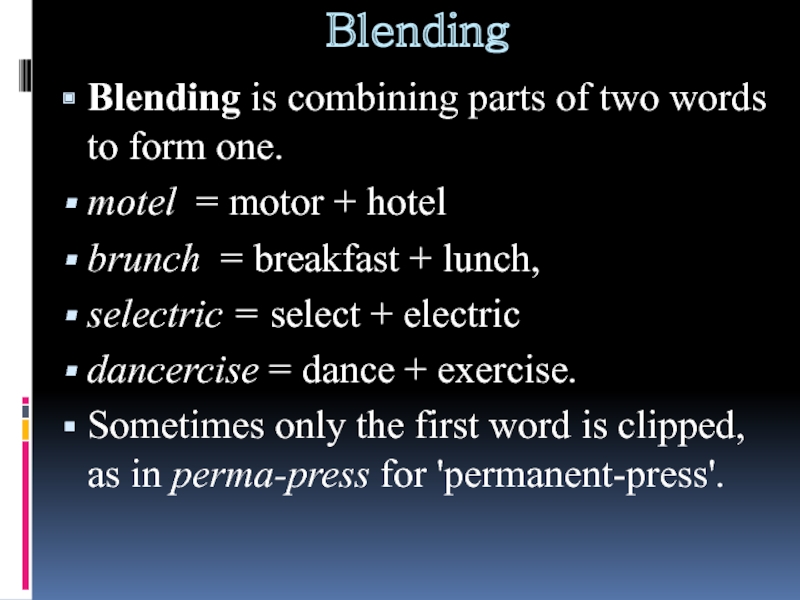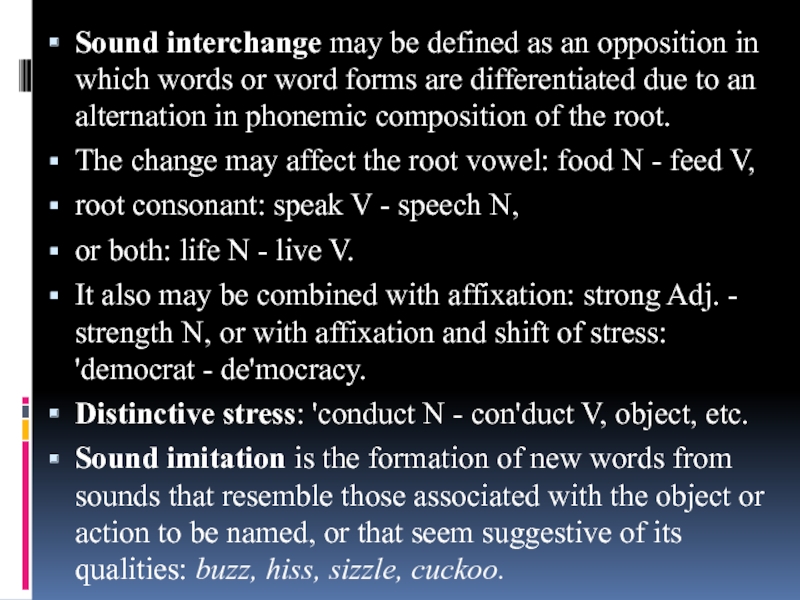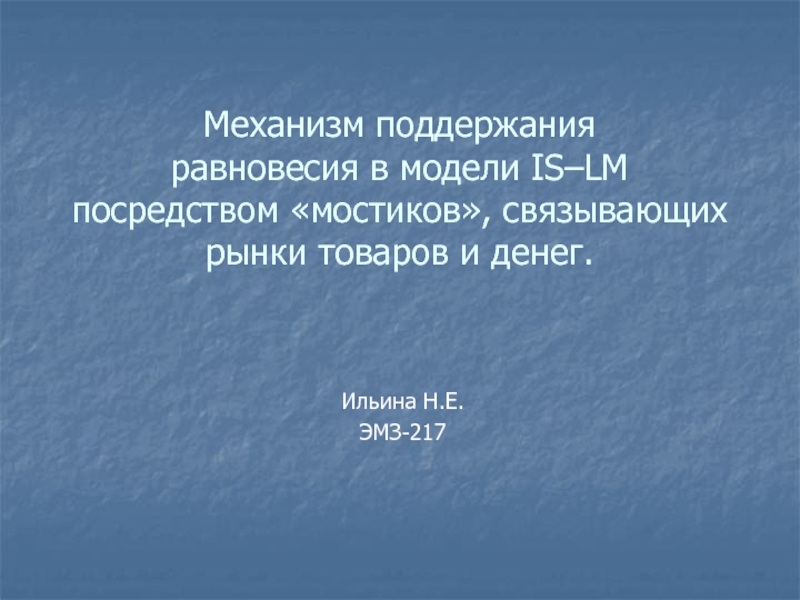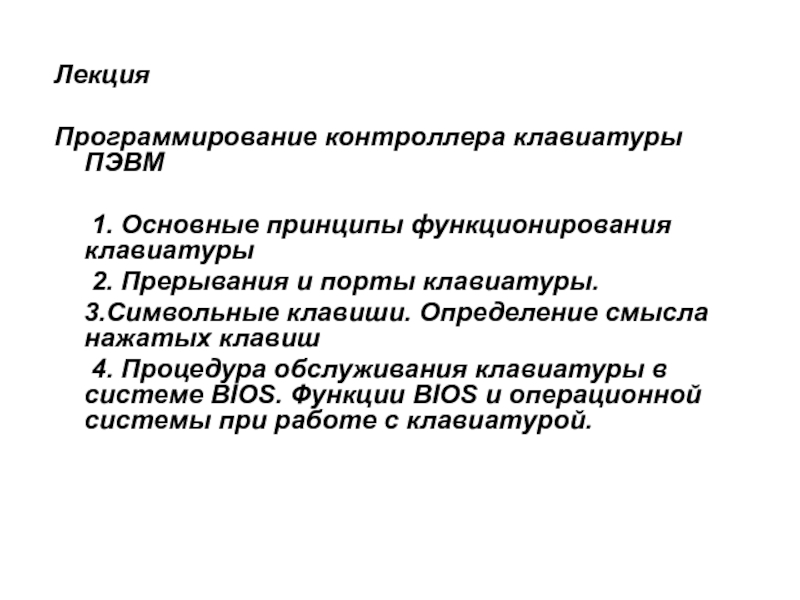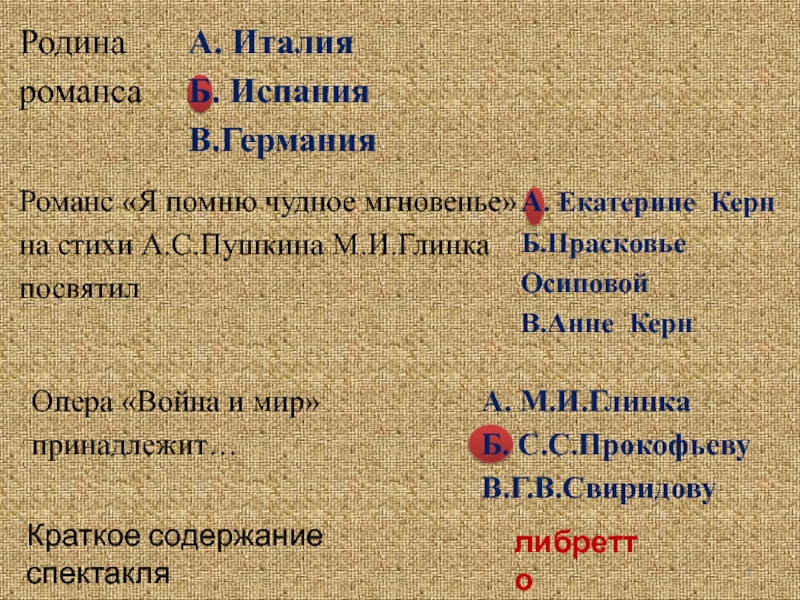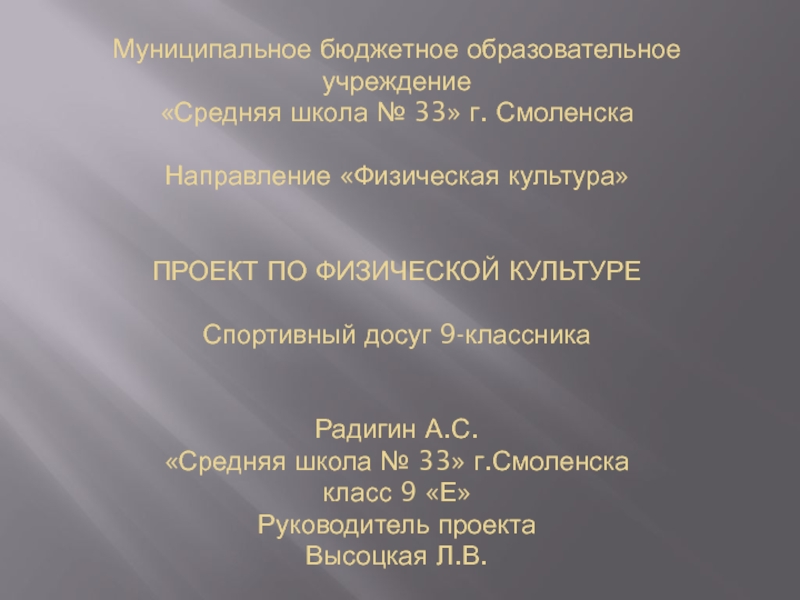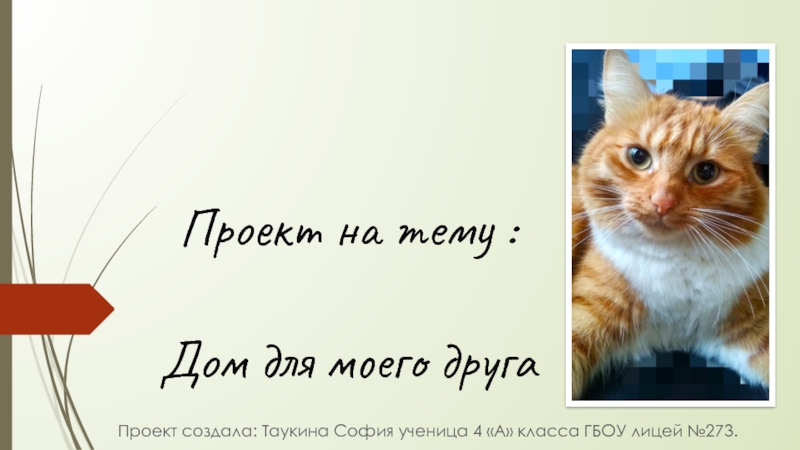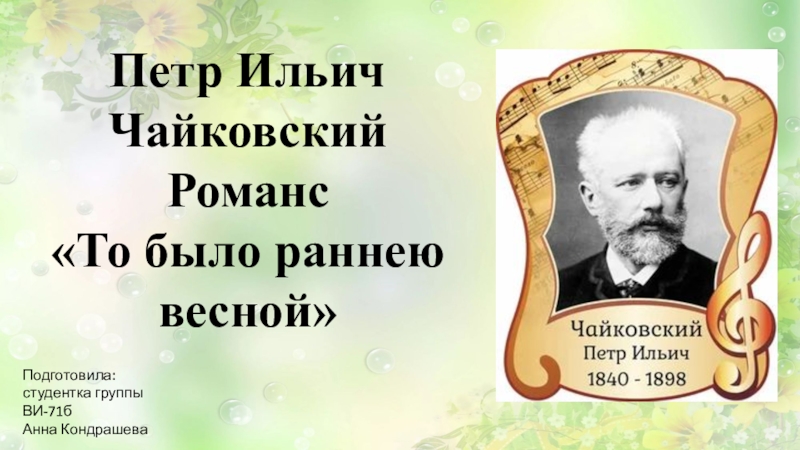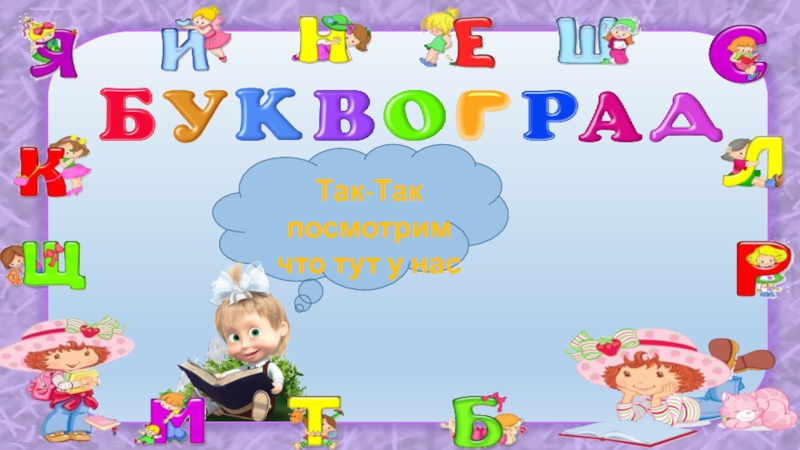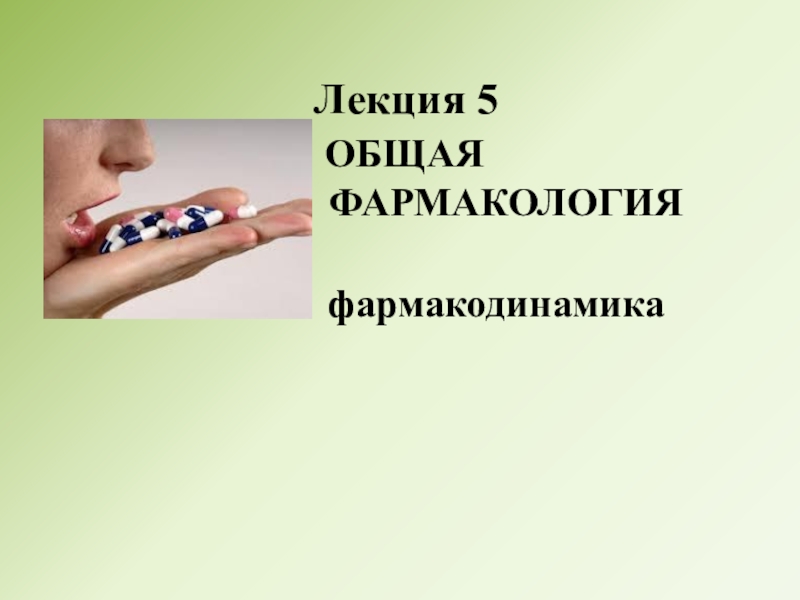Слайд 1Word-structure and
word-formation
in the English Language
Слайд 2How do we guess the meanings of the words we
have never encountered before?
Attachment:
attach (root morpheme) + -ment (suffix)
attachment –
smth. you add to a document
? Attachmeant ?
to mean – meant // -ment N-forming suffix
the file you meant to attach to your email but did not
Слайд 3This is one of the central questions of lexicology: the
structure of words and the ways of building new words
Lexicology
studies the internal structure of words and the rules of word-formation, the formation of new words from the resources of this particular language.
Together with the borrowing, word-forming provides for enlarging and enriching the vocabulary of the language.
Слайд 4Morphemes
What is the smallest meaningful unit of the language?
Sound /
phoneme???
Word???
ring > ringlet
MORPHEME!
Morpheme is the minimum meaningful language unit.
Morphemes
are not independent, they occur only as parts of words, although a word may consist of a single morpheme (love, house, red, cry).
Слайд 5Types of words from the morphological point of view
Слайд 6Phonetically conditioned positional variants of a morpheme are called allomorphs.
The negative prefix in- has the following allomorphs: im- (impossible),
ir- (irregular), il- (illegal).
Morphemes can be classified:
a) from the semantic point of view;
b) from the structural point of view.
Слайд 9Morphemic and word-formation analysis
The procedure employed for segmenting words is
morphemic analysis based on the method of Immediate and Ultimate
Constituents.
This method is based on a binary principle.
At each stage two components are singled out (referred to as the Immediate Constituents (ICs)).
Each IC at the next stage of the analysis is broken into two smaller meaningful units.
The analysis is complete when we arrive at further unsegmentable units, i.e. morphemes.
They are called Ultimate Constituents (UCs).
Слайд 11Structural word-formation analysis
proceeds further, studying the structural correlation with other
words.
It is done with the help of the principle of
oppositions, i.e. by studying the partly similar elements, the difference between which is functionally relevant.
In our case joyfully and joyful are members of a morphemic opposition.
Their distinctive feature is the suffix -ly, like in other oppositions of the same kind:
joyful dreadful beautiful
joyfully dreadfully beautifully
Observing this proportional opposition we may conclude that there is a type of derived adverbs consisting of an adjective stem and the suffix -ly.
Слайд 12Structural morphemic analysis is helpful in distinguishing compound words formed
by composition from the ones formed by other word-formation processes.
to
daydream to whitewash
composition or
composition + conversion?
day (N) + dream (N) = daydream (N) composition
daydream (N) > to daydream (V) conversion
white (ADJ) + to wash (V) = to whitewash (V) composition
Слайд 13Word-formation
A characteristic feature of all human languages is the potential
to create new words.
The categories of noun, verb, adjective, and
adverb are open in the sense that new members are constantly being added.
The most common types of word formation are derivation (affixation), composition (compounding), conversion.
The minor types of word formation are clipping, blending, back-formation, abbreviation, sound-imitation, sound-interchange, distinctive stress.
Слайд 14Affixation (Derivation)
Words which consist of a root and an affix
(or several affixes) are called derived words or derivatives.
Prefixes seldom
affect the basic lexico-grammatical component of the stem meaning.
A simple word and its prefixed derivative usually belong to the same part of speech:
read - reread (v); happy - unhappy (adj.),
but be- + adj. > v (belittle), en- + n > v (encase).
Suffixes mostly form a different part of speech and usually modify the lexical meaning of the base:
free (adj.) + -dom > n (freedom)
but ring (n) + -let > ringlet (n)
Слайд 15Classifications of affixes
according to their origin (native and borrowed)
Native suffixes:
-er (worker), -ness (loneliness), -ing (feeling), -hood (brotherhood),
-ship (friendship), -th (truth), -some (handsome), -en (darken), -ful (colorful)
Native prefixes: a- (awake)
Borrowed suffixes: -ant (deodorant) (Latin), (parentage) -age, -able (readable), -ance (clearance), -ard (Spaniard) (French), -ist (linguist), -ism (communism) (Greek)
Borrowed prefixes: pre- (prehistoric), post- (postwar), non- (nonhuman), anti- (antiaircraft) (Romanic and Greek)
Words that are made up of elements derived from different languages are called hybrids: readable
Слайд 16according to their semantic characteristics: polysemantic, synonymous and homonymous
Polysemantic: -у
1)
composed of, full of (bony, stony),
2) characterized by (rainy, cloudy),
3)
having the character of (bushy, inky).
Synonymous affixes:
1) doer of the action: -er, -ist, -ant (lover, journalist, defendant),
2) collectivity: -age, -dom, -(e)ry (officialdom, peasantry),
3) diminutiveness: -ie, -lit, -ling ( birdie, girlie, wolfling)
Homonymic:-ly:
1) Adj. + -ly > Adv. (quickly),
2) N + -ly > Adj. (lovely)
Слайд 17Affixes can also be classified into productive (living) and non-productive
(dead).
Productive:
1) N-forming suffixes: -er, -ing, -ness (blogging, facebooker)
2) V-forming: -ize,
-ate (napsterize)
3) Adj.- forming: -y, -ish, -ed, -able, -less (hay-smoked, proceedable, multitalentless)
4) Adv.-forming: -ly (muchly)
5) Prefixes: un-, re-, dis/de- (unfollow, retweet, defriend)
Non-productive:
1) N-forming: -th, -hood
2) Adj.-forming: -ly, -some, -en, -ous
3) V-forming: -en
Слайд 18Word-composition (compounding)
Compound words are words consisting of at least two
stems which occur in the language as free forms (blackbird).
Compounding
is highly productive in English.
Mostly it can be found in nouns (doorstep), adjectives (wine-dark), and verbs (stage-manage).
Among noun compounds the following types can be found:
N + N > N (steamboat)
V + N > N (crybaby)
Adj + N > N (strongbox).
Compound adjectives can be of the following types:
Adj. + Adj. > Adj. (red-hot)
N + Adj. > Adj. (bloodthirsty)
N + V > Adj. (snow-covered).
Слайд 19The constituent members of a compound are not always equal.
Some
compounds are made up of a determining (basic part =
determinatum) and a determined part (serves to differentiate the basic part = determinant).
Thus, in steam in steamboat , red in red-hot are determinants, because steamboat is a type of boat, red-hot is a degree of hotness.
When the meaning of the compound can be inferred from its parts it is called transparent (hairbrush, bedroom, dancing-hall) and non-transparent or idiomatic, when it cannot be inferred from the meaning of components (lazybones, football).
Слайд 20Criteria of differentiation b/w a compound word and a word-combination
1)
Graphic - solid or hyphenated spelling
airline, air-line, air line
2) Phonological
– stress
'ice-cream (compound) vs. 'ice 'cream (free phrase)
but this rule does not hold with adjectives: 'gray-'green, 'easy-'going
Besides, stress can differentiate the meaning of compounds:
man'kind "the human race" and 'mankind "men contrasted with women"
Слайд 213) Semantic – a compound expresses a single idea which
is not identical in meaning to the sum of the
meanings of its components in a free phrase.
Tallboy does not even denote a person, but a piece of furniture
! But the semantic criterion alone cannot prove anything as phraseological units also convey a single concept.
4) Morphological – a compound is stable
a tallboy - a tall and handsome boy
a tallboy – a tallestboy
5) syntactic – a compound has one function in the sentence: There is a tallboy in the corner.
In most cases, only several criteria can convincingly classify a lexical unit as either a compound word or a word group.
Слайд 22Conversion
Conversion is an extremely productive way of forming words in
Modern English (knife - to knife, to take - a
take).
It is treated differently in linguistic literature.
Some linguists define it as a morphological way of forming words (Smirnitsky, Ginzburg), treating conversion as the formation of a new word through changes in its paradigm.
Others (Arnold) consider it to be a morphological -syntactic word-building method, because it involves the semantic change, a change of the paradigm and a change of the syntactic function of the word.
A purely syntactic approach (functional approach) to conversion is popular with linguists in Great Britain and the USA. They define conversion as a kind of functional change.
Слайд 231. Verbs converted from nouns (denominal verbs) can express:
a) an
action characteristic of the object:
ape - to ape (behave as
apes do);
b) instrumental use of the object:
screw - to screw ('fasten with a screw');
c) acquisition or addition of the object:
fish - to fish;
d) deprivation of the object:
dust - to dust ('remove dust from something'),
skin - to skin ('strip off the skin').
Слайд 242. Nouns converted from verbs (deverbal substantives) can express
a) instance
of the action:
to jump - jump, to move - move;
b)
agent of the action:
to help - help 'a person who helps';
c) place of the action:
to drive - drive 'a path/road along which one drives‘;
d) object or result of the action:
to peel - peel 'the outer skin of fruit taken off.
Слайд 25Some other patterns of conversion can be mentioned.
3. Adjectives >
Nouns: supernatural, impossible, inevitable;
4. Participle > Adjectives: a standing man
/ rule, running water.
But not all the pairs of such words can be formed by conversion. Some of them arose:
(1) as a result of the loss of endings in the course of the historical developments of the English language: love, hate, rest, smell, work, end, answer, care, drink,
(2) assimilation of borrowings: check, cry, doubt, change.
Some linguists (Smirnitsky, Arbekova) call them patterned homonymy.
Слайд 26Minor types of word formation. Shortening
While derivation and compounding represent
addition, shortening, on the other hand, may be represented as
subtraction, in which part of word or word group is taken away.
Shortening can be called a process of word-coining.
Слайд 27Clipping
is a process of creating of a new word by
shortening of the original polysyllabic word (prototype).
According to what part
is cut off we distinguish:
final – doc (doctor),
initial – net (Internet)
medial clipping – poli-sci (political science).
Слайд 28Blending
Blending is combining parts of two words to form one.
motel
= motor + hotel
brunch = breakfast + lunch,
selectric = select
+ electric
dancercise = dance + exercise.
Sometimes only the first word is clipped, as in perma-press for 'permanent-press'.
Слайд 29Back-Formation
Back-formation is a process whereby a word whose form is
similar to that of a derived form undergoes a process
of deaffixation (the singling-out of a stem from a word which is wrongly regarded as a derivative).
resurrect < resurrection
enthuse < enthusiasm
donate < donation
orient < orientation
A major source of back-formation in English is represented by the words that end with -er or -or and have meanings involving the notion of an agent, such as editor, peddler, swindler, and stroker.
Because hundreds of words ending in these affixes are the result of affixation, it was assumed that these words too had been formed by adding -er or -or to a verb.
So, edit, peddle, swindle, and stroke exist as simple verbs.
Слайд 31Abbreviation
Abbreviation is the process and the result of forming a
word out of the initial elements (letters, morphemes) of a
word combination.
(a) If the abbreviated written form is read like a word it is called an acronym - AIDS, NASA (National Aeronautics and Space Administration), NATO (North Atlantic Treaty Organization), radar (radio detecting and ranging),
(b) The other subgroup of abbreviations is pronounces like a series of letters (initialisms) - S.O.S., NFL (National Football League), B.B.C. (the British Broadcasting Corporation),
(c) The term abbreviation may be used for a shortened form of a written word or phrase used in a text for economy of space and effort (graphic abbreviation) - L.A., N.Y., B.A. for Bachelor of Arts, ltd for limited, Xmas for Christmas.
Слайд 32Sound interchange may be defined as an opposition in which
words or word forms are differentiated due to an alternation
in phonemic composition of the root.
The change may affect the root vowel: food N - feed V,
root consonant: speak V - speech N,
or both: life N - live V.
It also may be combined with affixation: strong Adj. - strength N, or with affixation and shift of stress: 'democrat - de'mocracy.
Distinctive stress: 'conduct N - con'duct V, object, etc.
Sound imitation is the formation of new words from sounds that resemble those associated with the object or action to be named, or that seem suggestive of its qualities: buzz, hiss, sizzle, cuckoo.
